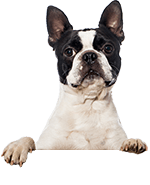Dog walking can be a fulfilling and joyful activity, but occasionally, it comes with unexpected challenges. One of the most daunting situations a dog walker might face is a dog altercation. As dog walkers in Columbus, Ohio, it’s crucial to be prepared for such incidents to ensure the safety of both the dogs in your care and yourself. This comprehensive guide will walk you through what to do during a dog altercation, how to handle the aftermath, and share preventive measures to avoid such incidents in the future.
During the Altercation
1. Stay Calm and Assess the Situation
The first and most crucial step is to remain calm. Dogs can sense your anxiety, and it can exacerbate the situation. Quickly assess the severity of the altercation. Determine if it’s a minor scuffle or something more serious.
2. Use Methods to Separate the Dogs
Although your first instinct might be to intervene between the dogs, this can be very unsafe and lead to injuries. Instead, try these safer techniques:
- Use Leashes: If the dogs are on leashes, use them to pull the dogs apart.
- Loud Noise: Use a loud, firm voice to command the dogs to stop. A shout like “No!” or “Stop!” can sometimes break their focus.
- Distraction: If you have an air horn, whistle, or even a water bottle, use it to distract the dogs.
- Barrier: If possible, place a barrier between the dogs, such as a large object or even your body with your back facing the dogs (only if it’s safe to do so).
3. Scream and Call for Help
If still unable to control the situation, scream and call for help. Attracting attention from nearby individuals can bring additional assistance.
After the Altercation
1. Check for Injuries
Once the dogs are separated, immediately check them for any injuries. Even minor wounds can lead to infections, so a thorough examination is essential. Look for cuts, puncture wounds, or any signs of pain and discomfort.
*If the injuries are severe, seek immediate veterinary care. You can visit the local MedVet for very urgent treatment. Also be sure to contact the dog’s primary veterinarian to inform them of the incident and receive further instructions.
2. Calm the Dogs
Calm the dogs by speaking to them in a soothing voice and giving them space to relax. Offer them water and ensure they are comfortable.
3. Document the Incident
Take note of the time, location, and details of the altercation. If there were any witnesses or human parties directly involved, gather their contact information. Take photos of any injuries on the dogs, as this documentation can be vital later on.
4. Communicate with the Pet Parent
It’s crucial to inform the pet parent about the incident as soon as possible. Here’s how to approach the conversation with success:
- Make a Phone Call: It’s best to call the client directly instead of texting, emailing, or leaving details in a journal report. A phone call reflects the urgency of the situation. If you’re part of a dog walking company, also inform your supervisor and team lead for additional guidance and instructions.
- Be Professional: Ensure you maintain a calm and professional demeanor throughout the conversation with the pet parent. Avoid being overly emotional, as this can increase stress for both parties.
- Be Honest: Clearly explain what happened without downplaying or exaggerating the situation.
- Share Documentation: Provide the pet parent with the details you documented, including photos of any injuries.
- Next Steps: Discuss any necessary veterinary care and how expenses will be handled if there are any injuries.
- Reassure Them: Assure the pet parent that you will take steps to prevent future altercations and that their dog’s safety is your top priority.
5. Evaluate and Adjust Your Approach
After dealing with the immediate aftermath, take some time to evaluate what happened and how it can be prevented in the future. Consider the following:
- Training and Behavior: If the dog in your care shows leash-reactive/aggressive tendencies, discuss training options with the pet parent.
- Routes and Timing: Adjust your walking routes and times to avoid known problem areas or times when other dogs are commonly out.
- Equipment: Ensure you have the necessary tools, like sturdy leashes, harnesses, distraction devices, whistles, and/or dog mace, to be prepared to handle future altercations.
Preventive Measures
1. Know the Dogs
Understand the temperament and triggers of the dogs you walk. If a dog has a history of leash reactivity, take extra precautions.
2. Leash and Control
Always keep the dogs on a leash and under control. Avoid using retractable leashes, as they provide less control.
3. Avoid High-Risk Areas
Steer clear of areas where loose dogs are known to roam or where there is heavy dog traffic.
4. Training and Socialization
Encourage pet parents to invest in proper training and socialization for their dogs. A well-trained dog is less likely to engage in aggressive or risky behavior.

Stay Vigilant, Stay Calm, Prioritize Safety
By following these guidelines, dog walkers in Columbus, Ohio can ensure a safer and more enjoyable experience for both themselves and the dogs they care for. Remember, preparation and knowledge are key to handling and preventing dog altercations. Stay vigilant, stay calm, and always prioritize safety.















